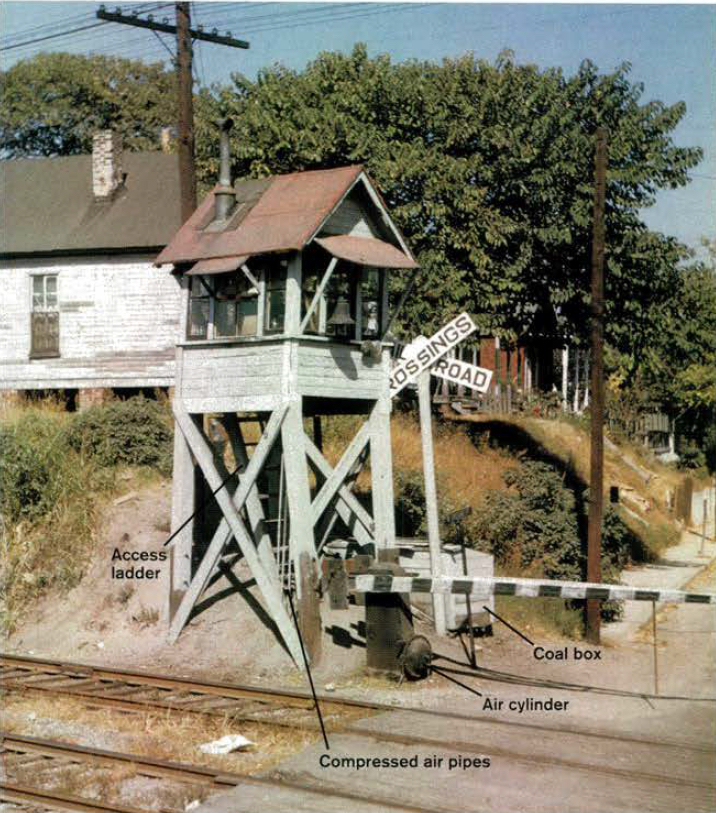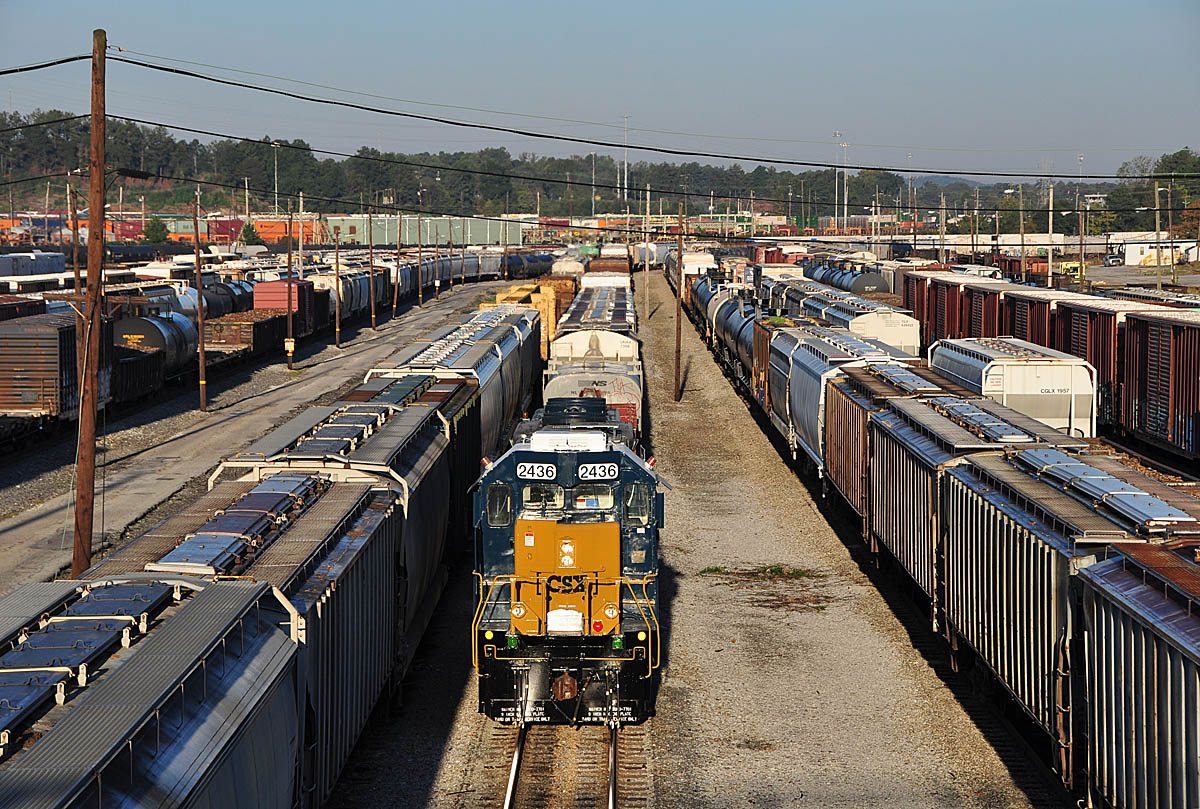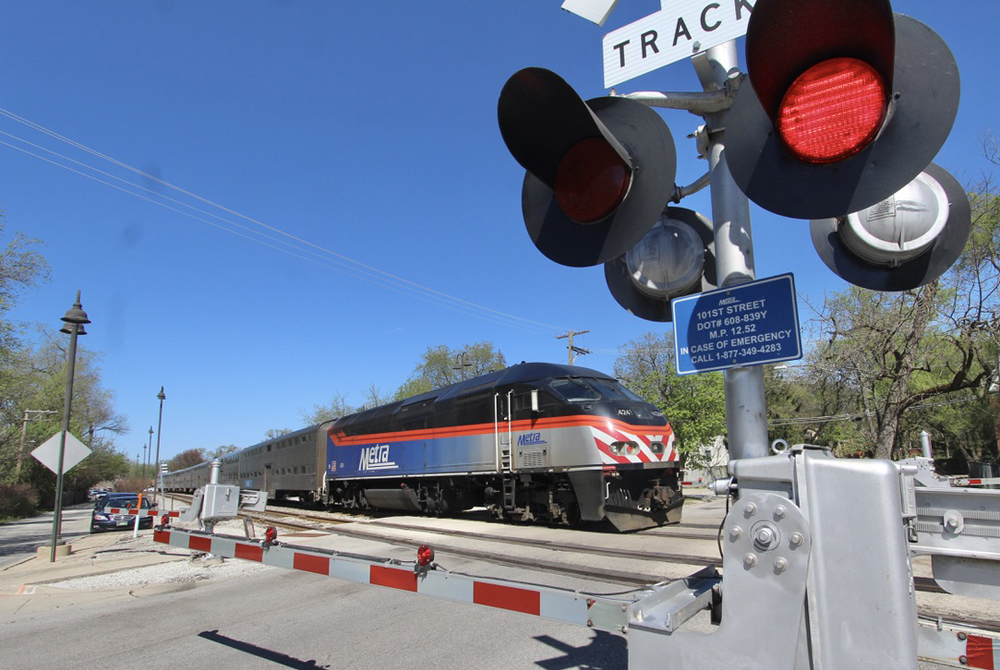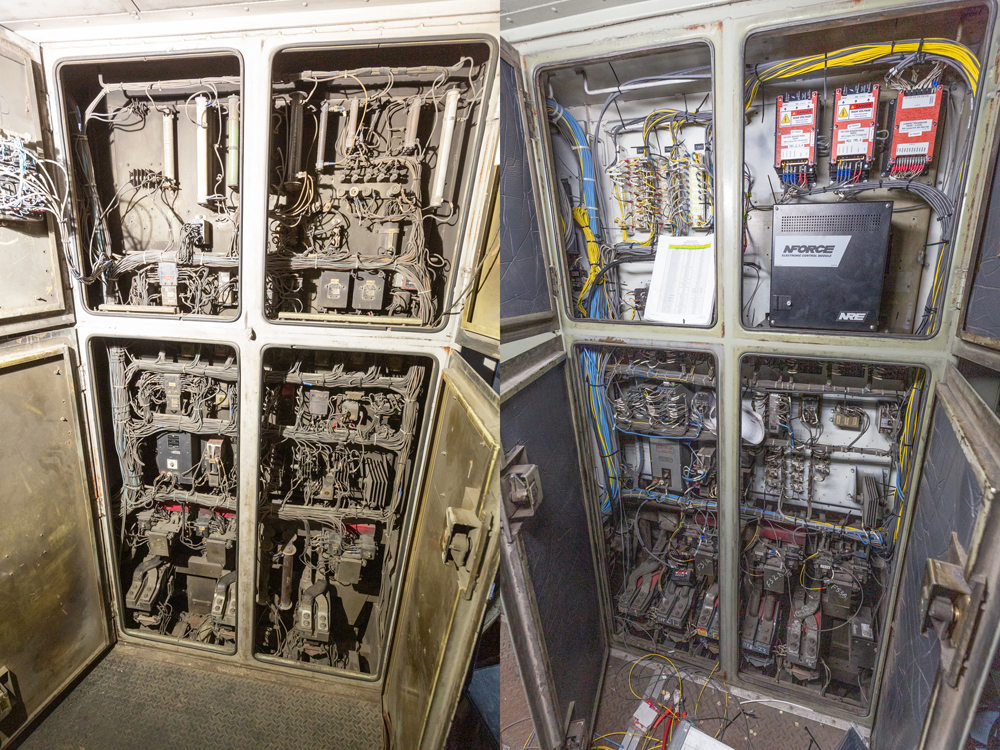FA – Flat car specifically equipped with superstructure or containers for transporting set-up vehicles, not suitable for miscellaneous commodities.
FB – Bulkhead flat cars. Equipped with fixed or permanently attached movable bulkheads or ends a minimum of three feet in height and flat floor for general commodity loading.
FBC – Flat car constructed with a center beam above the car deck from bulkhead to bulkhead.
FC – Flat cars specifically equipped to carry trucks, trailers, containers, chassis, or removable trailer bodies for the transportation of freight in
TOFC/COFC service.
FCA – Flat car, articulated multi-unit, specially equipped to carry trailers, containers, chassis, or removable trailer bodies for the transportation of freight in TOFC/COFC service.
FD – Depressed-center flat car of special construction having the portion of the floor extending between trucks depressed to provide necessary head room for certain commodities.
FL – Flat logging car or logging truck. This is either a straight-deck flat car, with or without bulkheads or load restraining devices, or car consisting of two trucks fitted with cross supports over truck bolsters; the trucks connected by a skeleton or flexible frame and logs loaded lengthwise on cross supports.
FM – Ordinary flat car for general service. This car has flooring laid over sills and without sides or ends.
FW – Flat car with hole to enable lading to be lowered due to clearance limits.
Class “G” – GONDOLA CAR TYPE
GA – Open top car having fixed sides and ends and drop bottom, consisting of doors hinged crosswise of car to dump between rails.
GB – Open top car having fixed sides, fixed or drop ends and solid bottom, suitable for mill trade.
GD – Open top car having fixed or drop ends, solid bottom and sides equipped with doors for dumping.
GH – Open top car having fixed sides, drop ends and drop bottom, consisting of doors hinged at center sills to dump outside of rails.
GS – Open top car having fixed sides and ends and drop bottom, consisting of doors hinged at center sills or side sills to dump outside and/or inside of rails.
GT – Open top car, having high fixed sides and fixed or hinged ends and solid bottom, suitable for unloading on dumping machines only.
GW – Open top well-hole car for transportation of special commodities. A solid bottom car with fixed sides and ends, having one or more openings or depressions provided in floor, permitting the lading to be lowered in order to obtain overhead clearance.
Class “H” – HOPPER CAR TYPE
HFA – Open top, self-clearing car having fixed sides and ends and bottom consisting of divided hoppers at center with doors hinged lengthwise, dumping outside and/or inside of rail; also one divided hopper, each end, extending from end of car to bolster with doors hinged lengthwise of car and dumping outside of rails.
HK – Open top self-clearing car having fixed sides and ends and bottom consisting of two or more divided hoppers dumping outside and/or inside or rails (includes former HD).
HM – Open top, self-clearing car having fixed sides and ends, and bottom consisting of two divided hoppers with doors hinged crosswise of car and dumping between rails.
HMA – Open top, self-clearing car having fixed sides and ends and bottom consisting of two divided hoppers with doors hinged lengthwise of car and dumping between rails (includes former HMB).
HT – Open top, self-clearing car having fixed sides and ends and bottom consisting of three or more divided hoppers with doors hinged crosswise of car and dumping between rails.
HTA – Open top self-clearing car having fixed sides and ends and bottom consisting of three or more divided hoppers with doors hinged lengthwise of car and dumping between rails (includes former HTB).
Class “L” – SPECIAL CAR TYPE
LC – A box car with side doors and roof hatches. May be equipped with end doors.
LF – A flat car equipped to handle one or more demountable containers for the transportation of commodities not under refrigeration. Note: not applicable to flat cars designed to handle containers in TOFC/COFC service or containers handling setup vehicles.
LG – Gondola car equipped to handle one or more demountable containers for the transportation of commodities not under refrigeration.
LM – A car equipped with one or more permanently enclosed tanks or containers, provided with one or more openings for loading and equipped for pneumatic or gravity unloading. Car is suitable for handling certain dry powdered or granular commodities and also low viscosity, non-dangerous liquid commodities.
LO – A permanently enclosed car, other than a box car, regardless of exterior or interior shape, for handling bulk commodities, with or without insulation and provided with openings for loading through top or sides with weather-tight covers or doors. Car may be provided with one or more bottom openings for unloading, with tight fitting covers, doors, valves, or tight fitting slide or gate to prevent leakage of lading. Car may be provided with facilities for discharge of lading through openings in top or sides and may have one or more compartments. Mechanical or other means may be provided within car to expedite loading or unloading (a covered hopper).
LP – An open-top car having solid bottom and fixed ends equipped with sloping floor or longitudinal floor risers or side stakes for the handling of pulpwood and not suitable for general commodity loading.
LS – A car of special construction having two separate interlocking units which form a car body. Units may be separated and load interposed between and locked in place to form a complete transportation unit.
LU – An enclosed car with roof, having a special metal beam of heavy design at top of each side to support a series of retractable overhead side doors and the appurtenances, or other types of doors, running substantially the length of car, which beams also support the roof details. Car may be equipped with special loading devices or racks for handling various commodities.
Class “M”
MT – Training Unit equipped with training aids or modified to demonstrate components of the unit.
Class “N”
NE – All cabooses.
Class “R” – REFRIGERATOR CAR TYPE
RB – Bunkerless refrigerator car similar in design to an RS car with or without ventilating devices and with or without devices for attaching portable heaters. Constructed with insulation in side ends, floor and roof to meet maximum UA factor requirement of 250 BTU/F/Hour for 50-foot cars and 300 BTU/F/Hour for 60-foot cars. Effective for cars ordered new after March 1, 1984. Cars built or rebuilt prior to March 1, 1984, must have been constructed with a minimum of 3 inches of insulation in the sides and ends and 3-1/2 inches in floor and roof based on the insulation requirements given in AAR Standard S-2010 or a thickness reduced in proportion to the thermal conductivity of the insulation.
RBL – Car similar in construction to an RB type car, but equipped in addition with adjustable loading or stowing devices. (10/57-4/99). Note: Cars equipped with interior side rails only, built new, rebuilt or reclassified on and after January 1, 1966, in order to qualify for the “RBL” designation, shall have a minimum of four (4) usable side rails on each wall of car, each extending from doorway to approximately four (4) feet from end of car.
RC – Refrigerator Car similar to an RB car using a cryogen to produce temperatures to transport frozen commodities.
RP – Mechanical Refrigerator car equipped with or without means of ventilation and provided with apparatus or other device for furnishing protection against heat and/or cold. Apparatus operated by power other than through the car axle.
RPB – Mechanical Refrigerator. Similar to RP type car but designed primarily for use in bulk potato or similar type loading as cars are equipped with interior slope sheets and conveyors and/or equipment for mechanical loading and unloading.
RPC – Mechanical Refrigerator car similar in design to an RP but equipped with permanently affixed container(s).
RPL – Mechanical Refrigerator. Similar to RP but equipped in addition with adjustable loading or stowing device.
RS – Bunker Refrigerator car equipped with ice bunkers. Designed primarily for use of chunk ice and with or without means of ventilation.
Class “S” – STOCK CAR TYPE
S – Car for transportation of livestock.
Class “T” – TANK CAR TYPE
T – Tank car. Tank car means any car which is used only for the transportation of liquids, liquefied gases, compressed gases, or solids that are liquified prior to unloading. Car may be without underframe if container serving as superstructure is designed to serve as underframe. If car has underframe, it must be designed only for the carriage of one or more enclosed containers (with or without compartments) that form the superstructure and are integral parts of the car. All such containers must be securely attached to the underframe when offered for transportation but may have demountable features. Before any car can be considered a tank car hereunder, the design of all such containers thereon must have been approved 1) by the AAR Committee on Tank Cars as having met all applicable AAR specifications and requirements and 2) by said Committee or, in appropriate cases, the Department of Transportation, as having met all applicable specifications and requirements of Subpart 1 of the Regulations of Transportation for Explosives and other Dangerous Articles.
Class “X” – BOX CAR TYPE
XM – Boxcar for general service equipped with side or side and end doors
XF – Non-insulated boxcar similar n design to XM, designed and specially prepared with a U,S, Food and Drug Administration approved white epoxy or other comparable white coating to seal interior walls, doors, and ends, and provide a smooth, durable surface to prevent contamination.
XL – Loader equipped. Similar in design to XM, with steel perforated side walls or equipped with interior side rails for securement of certain types of lading and/or permanently attached movable bulkheads.Note: Cars equipped with interior side rails only, built new, rebuilt or reclassified on or after January 1, 1966, in order to qualify for the XL designation, shall have a minimum of four (4) usable side rails on each wall of car, each extending from doorway to approximately four (4) feet from end of car, plus facilities in doorway to accommodate doorway members. The facilities in the doorway are not required in cars equipped with plug type doors.
XP – Boxcar similar in design to XM, but which is specially equipped, designed, and/or structurally suitable for a specific commodity loading; except boxcars (XF, XM, XMI) dedicated to the transportation of commodities in Paragraph A,
Rule 97, AAR Interchange Rules, must be designated XP.
Class “MW” – MAINTENANCE OF WAY EQUIPMENT
MWB – Ballast Cars. All descriptions of cars used for the purpose of carrying ballast for the laying of new right of way and repairs. The car used generally for this type of work is of the gondola type, with side or center dump.
MWC – Caboose and Tool Car. Similar to tool car, but having one end fitted up as a caboose, with bunks, stove and water storage, with or without lookout, and is used in either work or wrecking trains.
MWD – Dump Cars. On the type of contractors’ car used for building up fills; the body of the car dumps being raised by means of counterweight, air or hand power.
MWE – Ballast Spreader and Trimmer. A car with blades or wings for spreading or trimming ballast.
MWF – Flat Car. Used for transporting rails, ties or ballast and for storage of wrecking trucks, or gathering scraps along right of way. These cars are at times equipped with low sides, about 10 or 12 inches high.
MWG – Section Gang or Track Inspection Car. Flat car, with or without seats or tool boxes, and equipped with single or double cylinder gasoline engine serving as motive power.
MWH – Hand Car. This car is flat and mounted on four wheels and propelled by means of pushing, known as “Push Car.”
MWJ – Ballast Unloader. A car equipped with machinery for pulling a plow through cars loaded with ballast.
MWK – Snow-Removing Car. A car equipped with any special device for removing snow from between or alongside of rails.
MWL – Hand Car. This is a small flat car, with or without seats, mounted on four wheels and propelled by means of cranks or hand levers.
MWM – Store-Supply Car. A car equipped for handling material to be distributed for railway use.
MWP – Pile Driver. A car equipped with machinery for pile driving.
MWS – Steam Shovel. Car equipped with donkey engine. Having a boom of wood or steel and the end of which is a shovel or scoop. It may be propelled by its own power or by means of a locomotive and run as a car in freight trains, being equipped with safety appliances. The cubic capacity of shovels, in yards, can be indicated by figures after the classification letters.
MWT – Tool and Block Car. A car used for the carrying all descriptions of tool equipment and blocking. This car has side and end housings and roof, also end platforms. There are doors in sides and ends and usually windows. It is fitted inside with proper racks and boxes for storage of tools.
MWTK – Similar in design to T, but used specifically in maintenance-of-way service.
MWU – Wrecking Derrick. This derrick has boom and hoist fitted to frame of flat car and lifting done by means of hand power; propelled by locomotives.
MWV – Wrecking Derrick. This derrick has boom and hoist fitted to flat car and having drum at one end to furnish means of hoisting; steam furnished to donkey engine, running drum, by means of flexible steam line from attached locomotive; propelled by locomotive.
MWW – Wrecking Derrick. A derrick used for wrecking purposes having donkey engine to raise and lower booms and hoists; engine housed in and on separate platform with boom, is pivoted in center of car frame in order that it can be worked on either side or ends; usually fitted with anchor beams to be used for heavy lifting. Fitted with safety appliances and propelled by means of locomotive. Lifting capacity in tons shown by means of figures.
MWX – Boarding Outfit Car. This includes cars used for boarding, sleeping or cooking purposes in construction and similar work.
Weed Exterminator. A car equipped with machinery for propelling itself, or otherwise, and burning or spraying weeds along the track as it proceeds.
Ditching Car. A car equipped with machinery for propelling itself, or otherwise,
and excavating ditches along the sides of the track as it proceeds.
Rail Saw. A car equipped with machinery for sawing track rails and similar material.
Rail Bender. A car equipped with machinery for bending track rails and similar material.
Grass Cutter. A car equipped with machinery for propelling itself, or otherwise, and cutting grass along the track as it proceeds
Track Layer. A car equipped with machinery for propelling itself, or otherwise, and laying the track ahead of it as it proceeds.













